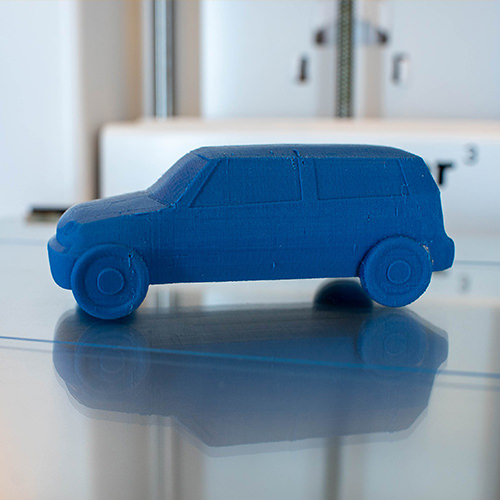Connected products hold a lot of promise, but are tricky.
While they can increase efficiency by automating tasks, their real power comes from making our lives better in some meaningful way. In other words, while there has to be some real functional benefit, it’s the emotional dimension that makes consumer delight possible. However, too many business leaders focus mainly on the technology, rather than focusing on the experience.
Why is this an issue? Consider what Bridget van Kranlingen, Senior VP at IBM said a few years back:
The last best experience that anyone has anywhere, becomes the minimum expectation for the experience they want everywhere.
Even for a company like Apple, generally lauded for its expertise in delivering great user experiences, getting it right is hard to do. It took the Apple Watch, for example, several iterations to find a durable, compelling value proposition.
Compared to the experience your smartphone delivers—which is almost certainly the last best (technology-driven) experience most of us have had—connected devices are frequently underwhelming. Do they truly deliver a “magical” experience? Or, despite overcoming the technical challenges of sensing and using data, does the ultimate benefit just not add up? How many neat sounding gadgets are lying around in some drawer or closet unused?
None of this is easy. Data, architecture, security, latency, digital UX, and physical product design all need to work in concert. And from an organizational perspective, these critical components likely span multiple silos and reporting lines within the business. Combined, this makes not just the design of connected products difficult, but also adds complexity to their management and maintenance. It’s perhaps not surprising, then, that connected products often fail to be easy, reliable, resilient or even secure.
Of course, ease of use, reliability, security and the like are the essential ingredient that make a great user experience possible. Getting them right sets the stage to “cross the chasm” from offering a usable product to delivering a meaningful one.

Put another way: Exposing process or organizational complexity to the end-user results in an experience deficit.
Given that consumer expectations are higher than ever, it’s essential to manage and eliminate mindsets, tactics, or organizational behaviors that result in experience deficits. Here are three areas to look out for:
- The experience solves a technical problem … and ends there. Technology can be exciting because it opens pathways to solve age-old problems in new ways. At Cantina, we constantly explore technology for this very reason. But, it’s easy to get lost in the weeds if you’re not careful. This is particularly risky when the challenges are hard. There’s a sense of accomplishment and pride from having solved them, and your team can fall in love with the solution—rather than the problem it’s there to solve—and can be reluctant to let go of it. Approaching engineering and experiential prototyping as an integrated activity is one way to avoid this trap. After all, none of it matters if customers don’t care.
- The experience is surface-level and facile. It most likely was strongly influenced by the businesses’ own biases and assumptions about their customers. This goes beyond thinking technology first. Some of the most dangerous words a business leader can utter are “we understand what our customers want.” It’s not that this can’t be true. But it’s full of risk and often, when we look at the data a business has collected, there’s a lot that describes “what” people are doing and very little that explains “why” they do it. It can’t be emphasized enough that unmet customer needs are gold: they’re opportunities for engagement and loyalty that your competitors haven’t yet recognized. The best way to surface unmet needs is through rigorous insights research, analysis and synthesis—this is when you move from describing apparent user actions to understanding user intent. To get a taste for some of the methods we use, check out our Method Cards website and associated app.
- The experience borrows from the past and fails to recognize that the product isn’t just a thing the customer buys, but is a service that radically translates the business’ relationship with the customer, a relationship that must persist over time. The implications of product-as-service are profound for business model, product management, and customer experience. Yet, many organizations borrow existing product management mindsets and practices from digital without fully recognizing how different connected products truly are.
To address these risks, we approach every connected product as a service challenge. This means we work tirelessly to uncover consumer insights and unmet needs and to unite UX, service design, and engineering so that the technology actually delivers the magic it promises: whether that’s greater control over our environment, an enhanced ability to sense (and make sense) of the world around us, peace of mind and safety, or growth and positive behavior change. In the end, if we’ve uncovered the “so what?” animating the unmet need, then we’re on solid footing to create a winning solution.
From a connected dog collar—one of Oprah’s “Favorite Things”—to a wearable EpiPen tracking system, we have both the theoretical and the real-world experience necessary to craft innovative connected products. We’d love to hear about your connected product vision.

From the Blog
To get a sense for how we approach connected products, here’s a selection of articles from our blog:
A Connected Product Isn’t Always A More Useful One — “Smart” isn’t always better. Think of a product that has solved a problem for people for centuries: the hair brush, the diaper, and the trash can. There is now a product development team building a wifi chip, biometric sensor, or voice UI for it. In the rush to differentiate or grab early PR, product companies are back to thinking ‘technology first.’ Instead, discovering unsolved human problems in a market should be the catalyst for product innovation.
That Thing You Bought Isn’t A Thing, It’s A Service - Part 1 — The modern world is increasingly service-based, and this deeply affects the way we think about the things we purchase. In the past, when we bought something, we owned it and it was ours to use as we pleased. Now, however, many of the things we buy are actually services that we pay to access—and which can be taken away at any time. This shift has profound implications for the way we think about our possessions and our relationship to them.
That’s Not a Thing, It’s A Service - Part 2 — Companies can induce higher customer engagement and loyalty by understanding the difference between a product and a service. A product is a tangible item that is purchased, while a service is an intangible offering that is consumed. Many companies treat services as if they were products, which leads to poor customer experience. Companies need to understand that customers are not just buying a product, they are also buying the company’s expertise.
Prototyping a Connected Driving Experience — At a pre-pandemic SXSW workshop, we invited participants to design the future of connected driving. Our materials? Markers, foam core, tape and a lot of creativity and imagination. Rolling up your sleeves and making is one of the best ways to uncover, explore, and test new ideas quickly. The key is a focused approach grounded in design thinking principles.
Designing Connected Health Products People Love — Connected health products must carefully consider not just user needs, but also emotion and behavior change. As such, patient experience and user insights are particularly critical in their design. Of course, it is necessary to understand the user’s needs in order to design a product that meets them. But, critically, the product must also be designed to evoke the right emotions in the user and to encourage the user to change their behavior in a positive way.
About Cantina
Cantina is an innovation consultancy headquartered in Boston. For more than 15 years, we’ve partnered with visionary business leaders to challenge the status quo, reimagine products & services for a customer-centric age, and drive new growth and efficiencies for our clients’ organizations.
What we’ve learned throughout our history is that innovation is not magic. It’s the result of disciplined craft and methodology that bridges the gap between design thinking and design doing. By applying a creative, multidisciplinary approach, Cantina helps our clients create and sustain innovation, transform business-as-usual, and improve the lives of customers and employees.
For more information, visit cantina.co



